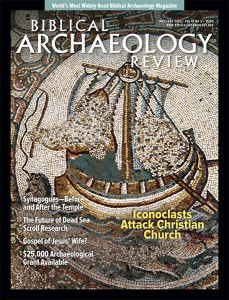Ada Yardeni has a diploma in graphic arts and calligraphy, as well as a Ph.D. in Semitic languages, paleography and epigraphy. And she has managed to combine her skills in both fields. It is not only that she can make the reader understand the development of these scripts; she can look at the ancient scribe right over his shoulder. The reader gets an idea of how ancient letters were “stroked” into being. Moreover, her drawings of letters gives other paleographers an idea of what a good drawing should look like.
This little book is an easy-to-understand (well, relatively easy) introduction to the paleography of the Dead Sea Scrolls. It is a kind of summary of the author’s well-known monograph The Book of Hebrew Script (Jerusalem: Carta, 2002). While the latter is much more wide-ranging, the former focuses especially on the paleography of the Dead Sea Scrolls. In addition, it is more user-friendly, having high-resolution color photos and Yardeni’s drawings often side by side.
The reader is first taken on a short historical tour, beginning with the emergence of the pre-exilic Hebrew alphabet from the Phoenician script.
She then points out how the pre-exilic Hebrew script was constantly subject to change, dependent on the materials used, on the purpose of the text, on the scribes themselves and on influences from outside (e.g., the Assyrian conquest of the northern state of Israel in the eighth century B.C.E. and the Babylonian conquest of Judah in the sixth century B.C.E.). With the Persian period, the Aramaic script came into general use, along with local developments. One of these developments is called the “Jewish” script, and Yardeni demonstrates its emergence in detail. The “Jewish” script is also the script employed in most of the Dead Sea Scrolls.
Already a library member? Log in here.
Institution user? Log in with your IP address.

